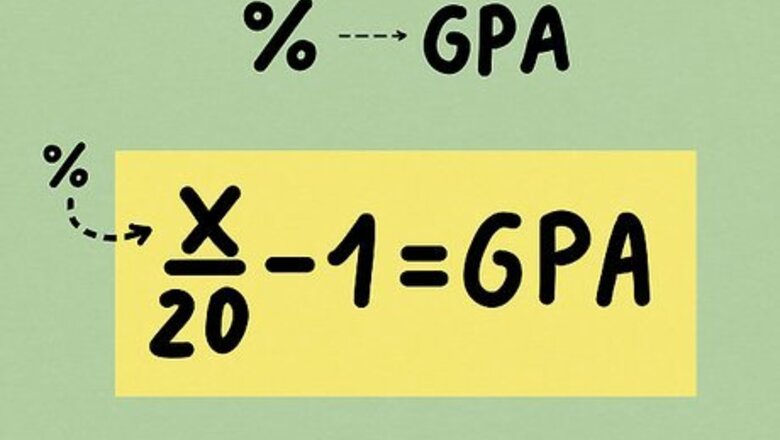
views
Converting One Percentage into a 4.0 GPA
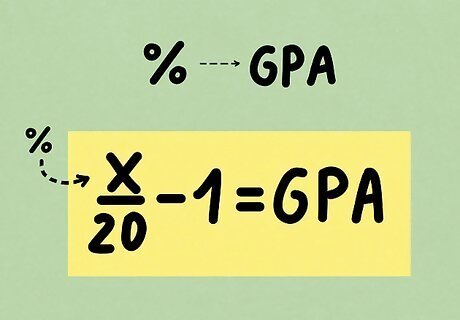
Know the formula for converting a percentage into a 4.0 GPA. Let's use x to represent the percentage. The formula to use when converting a percentage into a GPA (with a scale of 4.0) is (x/20) - 1 = GPA.
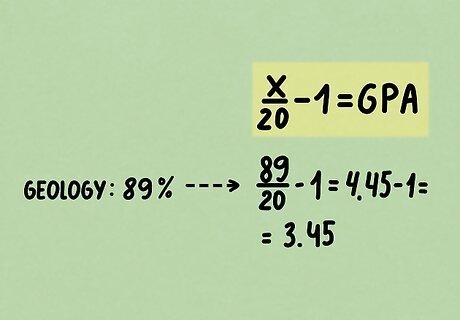
Plug the percentage into the formula and solve. Let's say you have an 89% in Geology. Just plug it into the formula to get the following: 89/20 - 1 = 4.45 - 1 = 3.45. The GPA equivalent of 89% is 3.45.
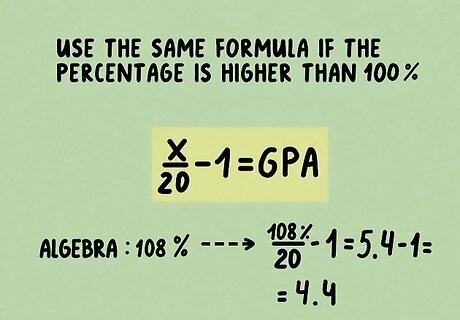
Use the same formula if the percentage is higher than 100%. The process will be the same even if your percentage is higher than 100%. Let's say you got a whopping 108% in Algebra. Here's what happens when you plug it in: 108/20 - 1 = 5.4 - 1 = 4.4 The GPA equivalent of 108% is 4.4.
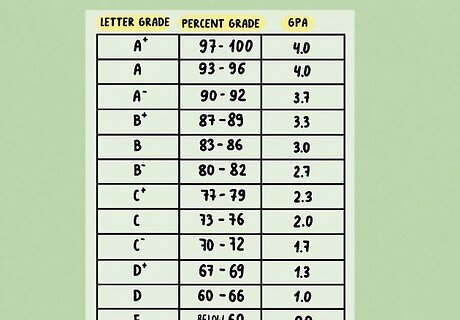
Consider using a scale instead. This may be useful depending on what you are calculating your GPA for. If you are calculating one grade at a time to see how they will add up for your high school GPA, then you may not have to follow this exact formula because all grades will fall within a range anyway. For example, if your grade falls within the range of 83-86, then depending on your high school, then you will have a B, or a 3.0, whether it falls on the higher or lower part of the range or not. Check out your school's GPA system to figure out how to do this; some high schools have a slightly different range for what makes an A- vs. an A, a B vs. a B+, and so on.
Converting Multiple Grades into a 4.0 GPA
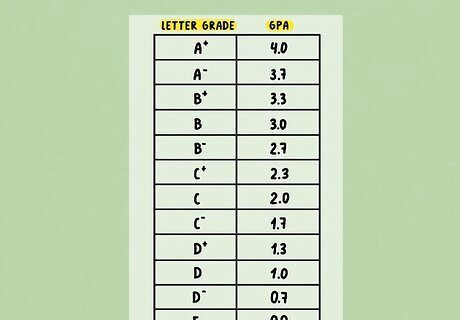
Assign a numerical score to your each of your grades. Each grade that you get at the end of a class has a number equivalent on the 4.0 scale. Find a number equivalent for each grade that you get. Each school's numeral scores may vary slightly, so look into the GPA system at your school. Here is what the typical scoring system looks like: A = 4 A- = 3.7 B+ = 3.3 B = 3 B- = 2.7 C+ = 2.3 C = 2.0 C- = 1.7 D+ = 1.3 D = 1 D- = .7 F = 0
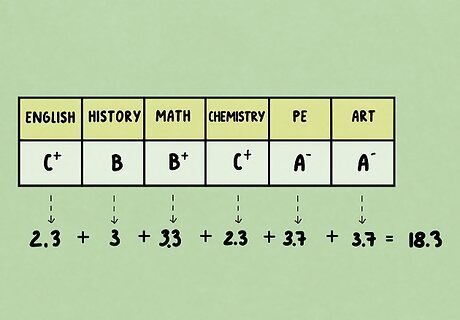
Add up all of your numerical scores. Add up the numerical scores assigned to each of your grades. For the sake of example, say you took English (C+), History (B), Math (B+), Chemistry (C+), Physical Education (A-), and Art (A-). That would mean you'd have: 2.3 + 3 + 3.3 + 2.3 + 3.7 + 3.7 = 18.3.
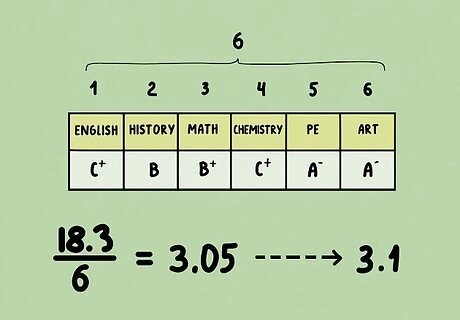
Divide your number by the number of classes you took. This is another way of saying that you will have to find the average numerical score. This will give you your final GPA score on a 4.0 scale. In our example, we added up our numbers to get 18.3. Since we took six classes, we have to divide 18.3 by six. 18.3 ÷ 6 = 3.05 (or 3.1).
Calculating Weighted GPA
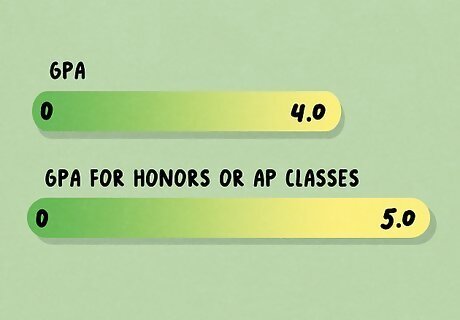
Understand weighted GPA. Weighted GPA is the idea that some harder classes, like honors or AP, should be weighted to reflect an extra degree of difficulty. So, instead of the traditional 4.0 grade scale, a weighted scale can go as high as 5.0, reflecting a harder course load. The idea is that getting a "C" in AP Algebra is just as hard as getting a "B" in regular Algebra.
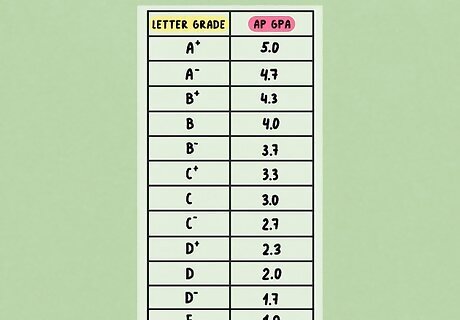
Assign a numerical score to each of your grades. This time, use the same table as above, except add 1 point to each grade that you got in an honors or AP class. Here is what the scaling system usually looks like: A = 5 A- = 4.7 B+ = 4.3 B = 4 B- = 3.7 C+ = 3.3 C = 3.0 C- = 2.7 D+ = 2.3 D = 2 D- = 1.7 F = 1
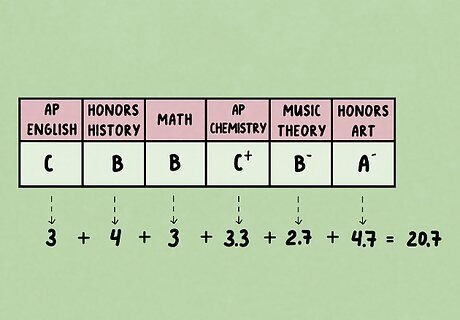
Add up all your numerical scores. Add up the numerical scores assigned to each of your grades. For the sake of example, say you took AP English (C), Honors History (B), Math (B), AP Chemistry (C+), Music Theory (B-), and Honors Art (A-). That would mean you'd have: 3 + 4 + 3 + 3.3 + 2.7 + 4.7 = 20.7.
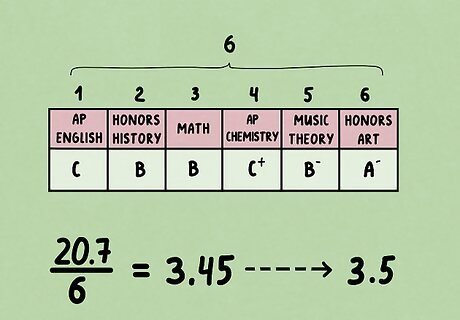
Divide your number by the number of classes you took. Again, you're just finding the average score. This will give you your final GPA score on a 5.0 scale. Note that you can only receive a 5.0 GPA if all of your classes are honors or AP and you receive an "A" in each class. Many students are required to take classes without extra degrees of difficulty, such as gym. In our example, we added up our numbers to get 20.7. Since we took six classes, we have to divide 20.7 by six. 20.7 ÷ 6 = 3.45 (or 3.5).
Calculating transcript or research only courses
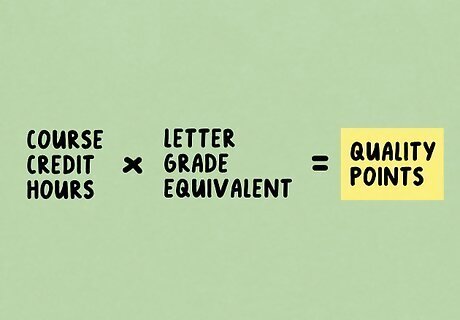
Multiply the course Credit Hours by the letter grade equivalent (see below) to get the Quality Points. For example: (3 Credit Hours * 4.5 (A+))
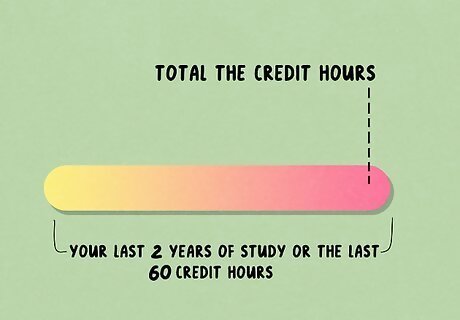
Total the credit hours in your last 2 years of study or in the last 60 Credit Hours (see above).

Divide the total Quality Points by the total Credit Hours. Product: Credit Hours * letter grades)) / (Total Credit Hours); or (Quality Points) / (Total Credit Hours)
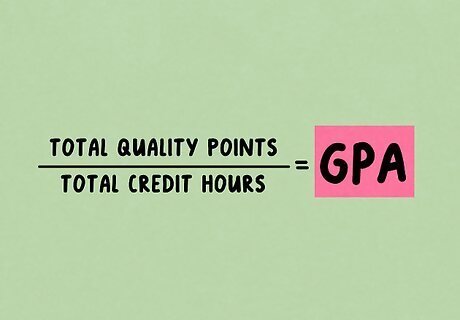
Finished. This is your GPA. Calculated GPA /4.0 = X / 4.5




















Comments
0 comment